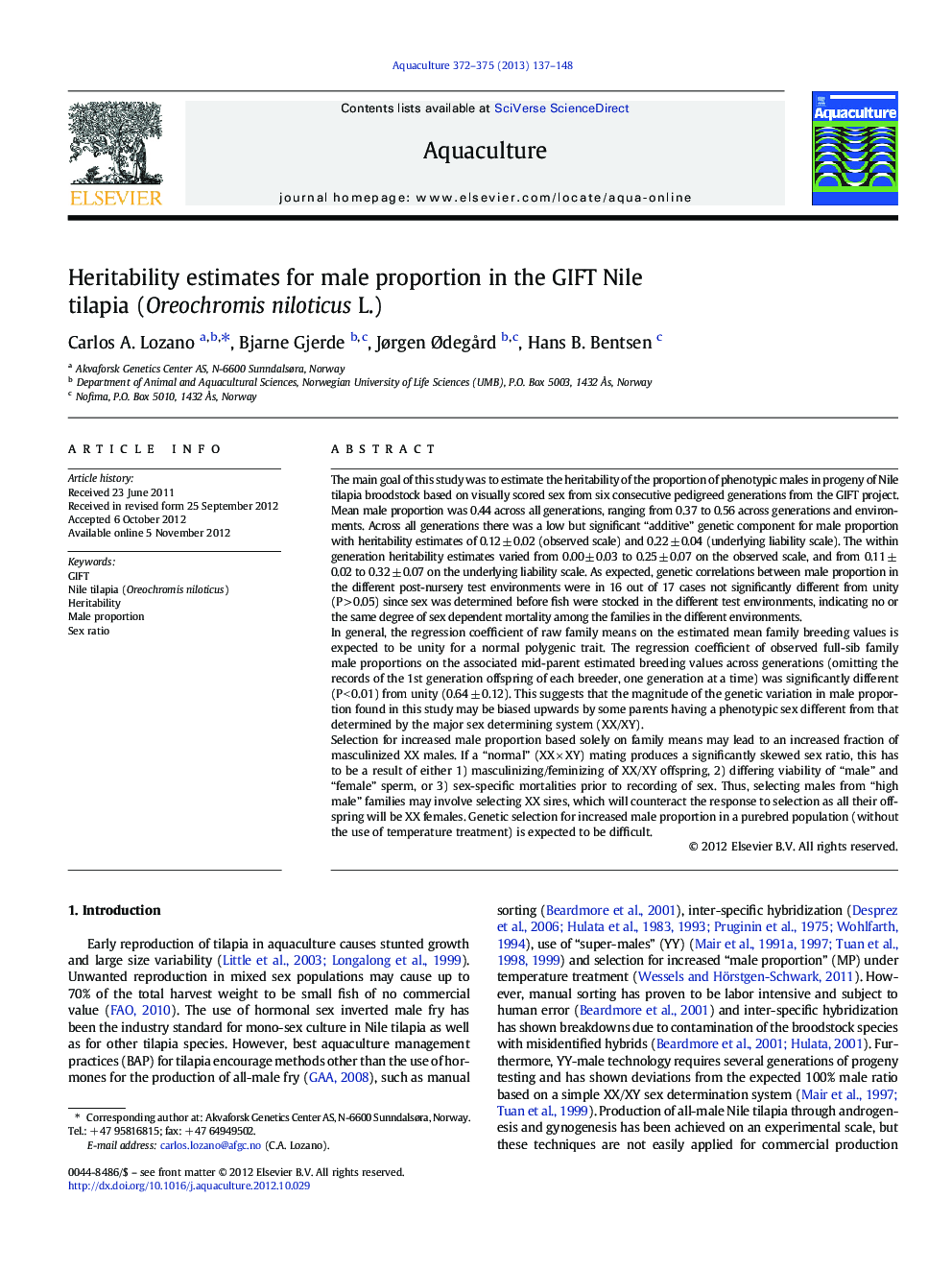| کد مقاله | کد نشریه | سال انتشار | مقاله انگلیسی | نسخه تمام متن |
|---|---|---|---|---|
| 2422276 | 1552880 | 2013 | 12 صفحه PDF | دانلود رایگان |

The main goal of this study was to estimate the heritability of the proportion of phenotypic males in progeny of Nile tilapia broodstock based on visually scored sex from six consecutive pedigreed generations from the GIFT project. Mean male proportion was 0.44 across all generations, ranging from 0.37 to 0.56 across generations and environments. Across all generations there was a low but significant “additive” genetic component for male proportion with heritability estimates of 0.12 ± 0.02 (observed scale) and 0.22 ± 0.04 (underlying liability scale). The within generation heritability estimates varied from 0.00 ± 0.03 to 0.25 ± 0.07 on the observed scale, and from 0.11 ± 0.02 to 0.32 ± 0.07 on the underlying liability scale. As expected, genetic correlations between male proportion in the different post-nursery test environments were in 16 out of 17 cases not significantly different from unity (P > 0.05) since sex was determined before fish were stocked in the different test environments, indicating no or the same degree of sex dependent mortality among the families in the different environments.In general, the regression coefficient of raw family means on the estimated mean family breeding values is expected to be unity for a normal polygenic trait. The regression coefficient of observed full-sib family male proportions on the associated mid-parent estimated breeding values across generations (omitting the records of the 1st generation offspring of each breeder, one generation at a time) was significantly different (P < 0.01) from unity (0.64 ± 0.12). This suggests that the magnitude of the genetic variation in male proportion found in this study may be biased upwards by some parents having a phenotypic sex different from that determined by the major sex determining system (XX/XY).Selection for increased male proportion based solely on family means may lead to an increased fraction of masculinized XX males. If a “normal” (XX × XY) mating produces a significantly skewed sex ratio, this has to be a result of either 1) masculinizing/feminizing of XX/XY offspring, 2) differing viability of “male” and “female” sperm, or 3) sex-specific mortalities prior to recording of sex. Thus, selecting males from “high male” families may involve selecting XX sires, which will counteract the response to selection as all their offspring will be XX females. Genetic selection for increased male proportion in a purebred population (without the use of temperature treatment) is expected to be difficult.
► Visually scored sex from six generations of GIFT Nile tilapia was studied.
► Male proportion heritabilities were obtained using two models.
► There was a low but significant “additive” genetic component for male proportion.
Journal: Aquaculture - Volumes 372–375, 24 January 2013, Pages 137–148